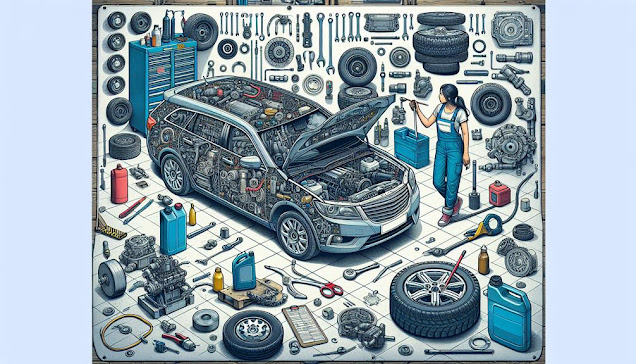Journey through time with us as we explore the fascinating evolution of automotive brake systems
In the field of automotive engineering, the switch from disc brakes to drums represents a major change that has dramatically improved the safety and performance of cars.
This transformation is testament to the unending advancement of technology within the field. At first, cars were equipped with drum brakes. This was a method that, while effective, came with limitations.
The invention of disc brakes provided the most efficient, reliable and heat dissipative option which marked a significant technological advancement in the field of braking.
As we journey from the past to the present We invite you to take part in our exploration of the complex mechanics and engineering innovations that have created modern automotive brake systems.
https://medium.com/@starautomotivellc123/uncover-the-mystery-behind-brake-issues-9b7a748dfcd1
The Early Era: Drum Brakes
In the earliest days of automobile brake systems drum brakes became the first major step in improving safety in vehicles, indicating the beginning of a process that would alter the face of technology for vehicles.
The basic, yet efficient system consisted of drums and a set of shoes, which created friction to slow the movement of wheels, eventually slowing the vehicle. The physics-based simplicity of drum brakes with their low cost led to widespread acceptance throughout the entire industry.
However, they were not without some limitations, for instance, the potential to fade in the face of heavy usage because of the heat that is generated in the enclosure.
Therefore, even though drum brakes represented an important moment in the safety of vehicles, they were only the first step in paving an avenue for the development of more sophisticated brake technology.
Transition to Modernity: Disc Brakes
When the shortcomings of drum brakes started to be exposed, the automobile industry began to shift to the most modern, efficient and reliable system called disc brakes. The disc brakes, which comprised the rotor, which is directly attached to the wheel, and the caliper for creating friction, provided significant advantages:
* Improved Heat DissipationDisc brakes help dissipate heat more effectively, thus preventing fade in the brakes.
* Better Wet Weather Performance In contrast to drum brakes that use discs do not stop water from entering.
* ** Less Complex Designs:** Disk brakes use fewer parts and make maintenance simpler.
"Enhanced Stopping Power:Disk brakes give you more stopping power, which improves security.
This change was a major advancement in the field of automobile technology, giving drivers greater control, endurance and performance.
Our collective quest for safer and more reliable vehicles is continuing disc brakes continue to be essential to this advancement.
.png)


Comments
Post a Comment